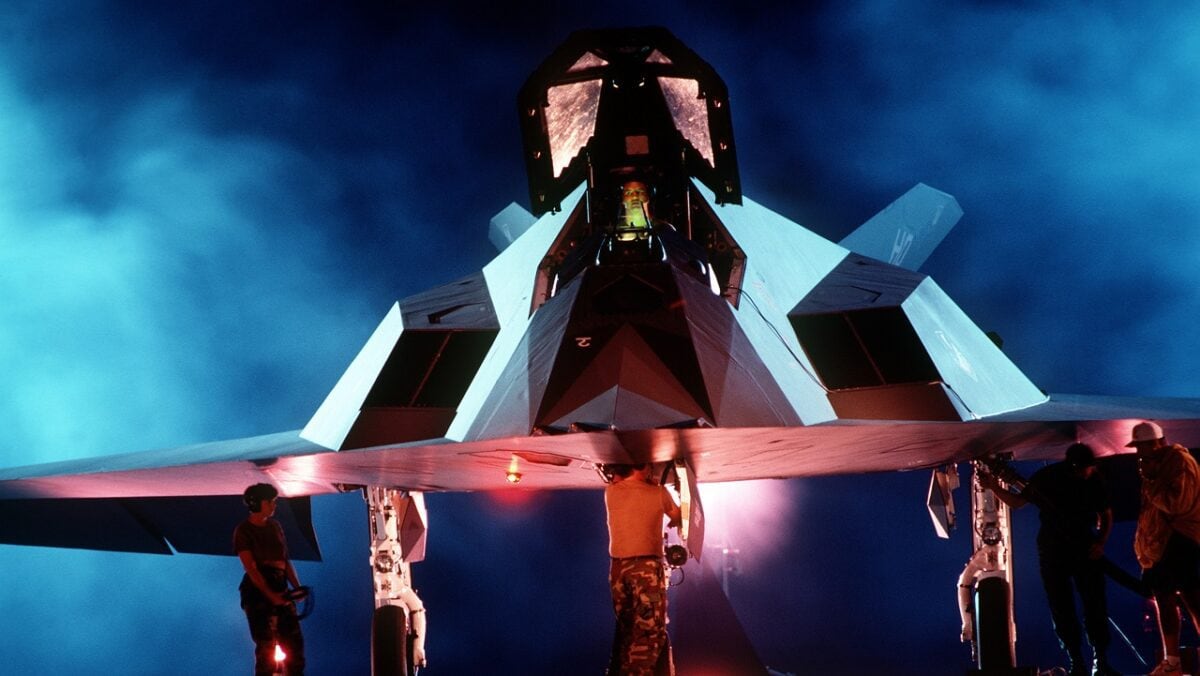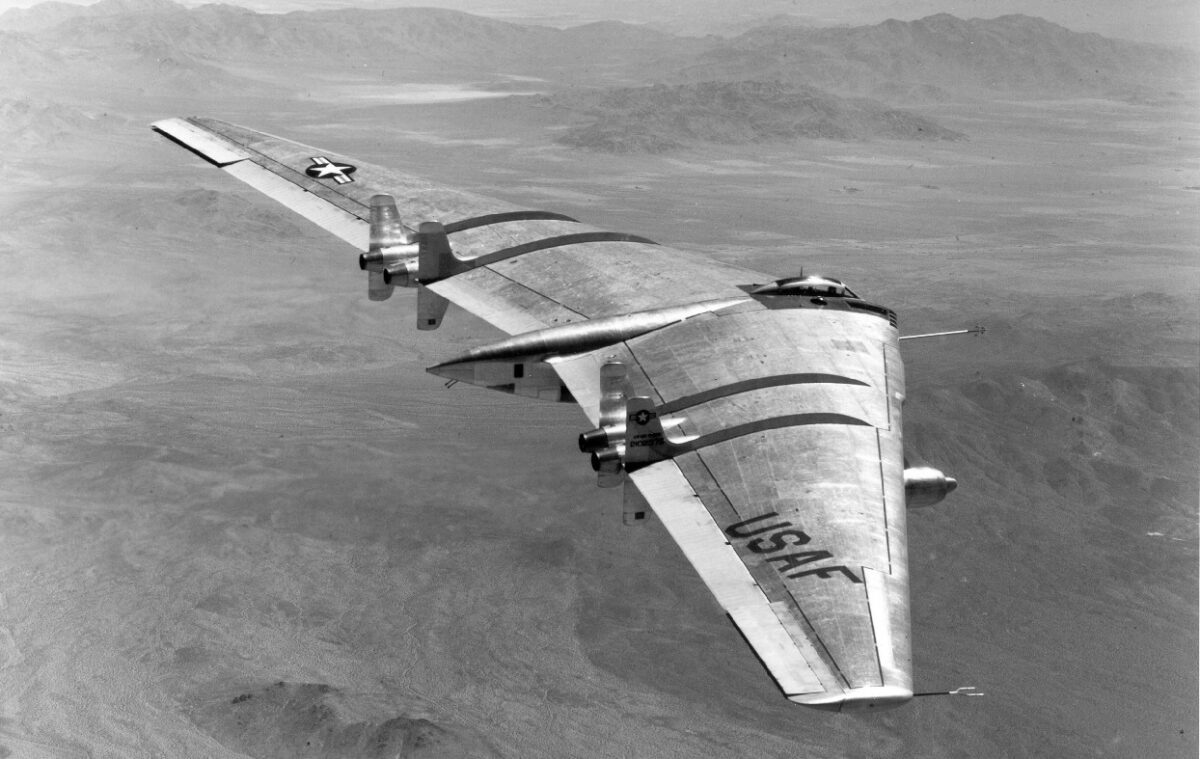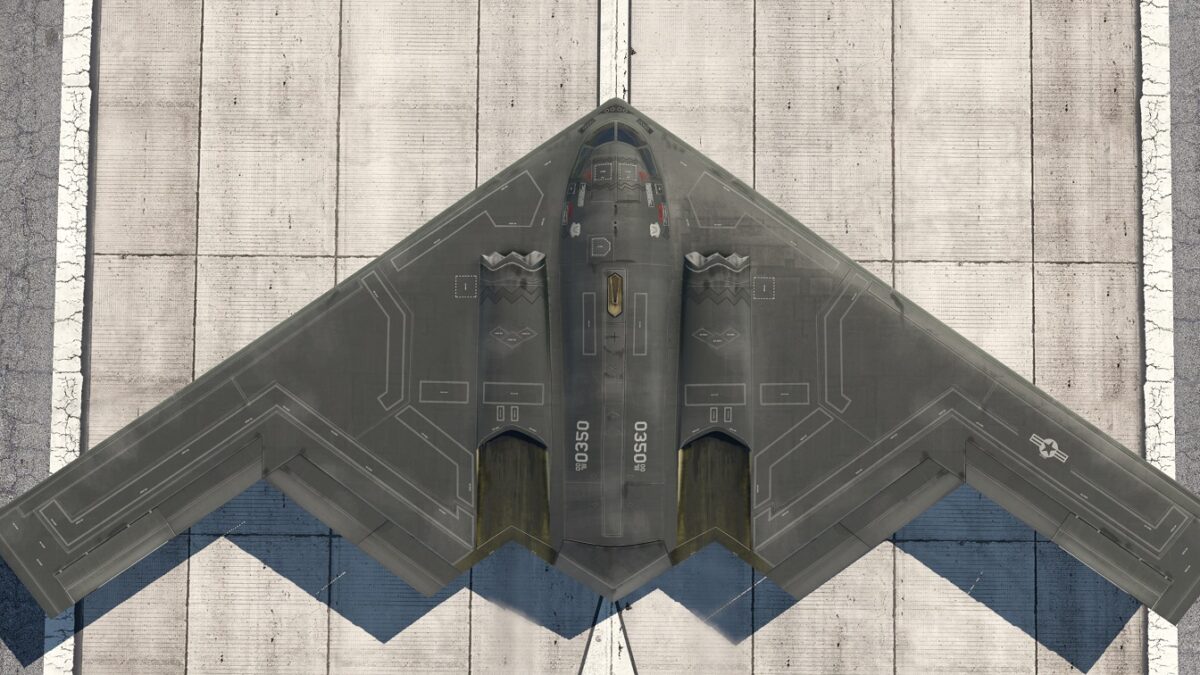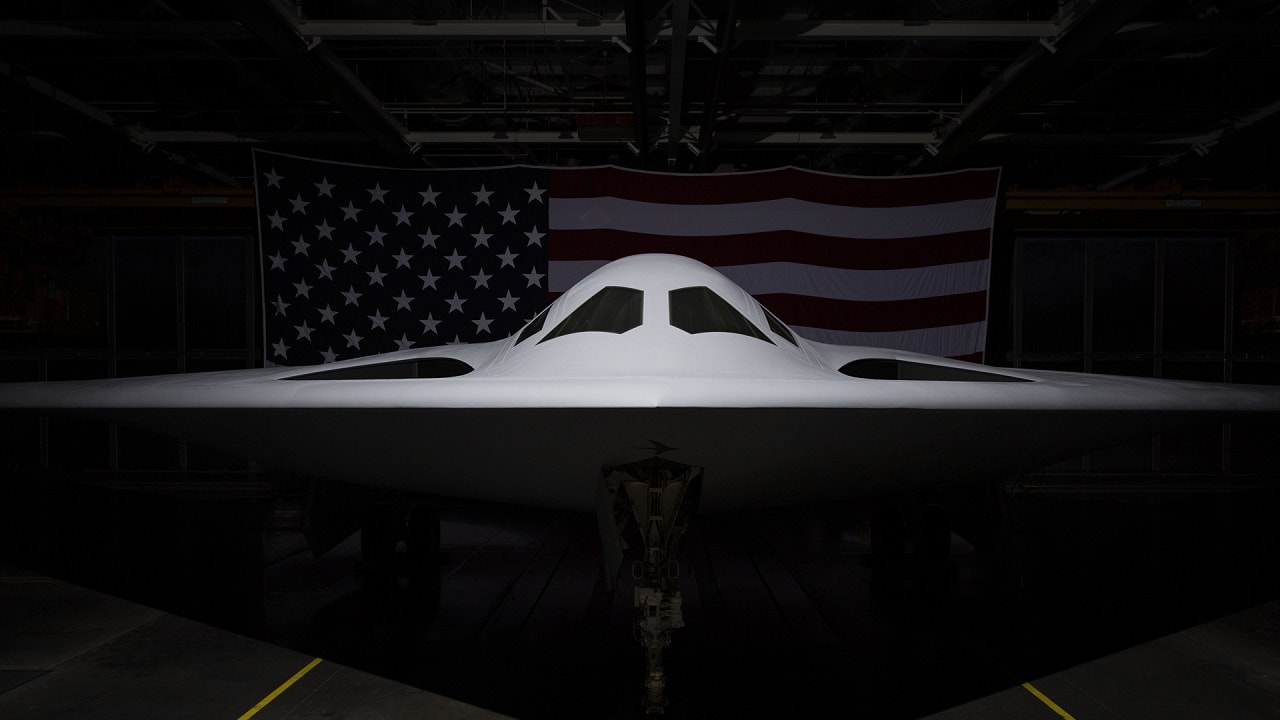Stealth Bomber Redux: Part I Beginnings: Jack Northrop and the Flying-Wing – The following is a multi-part series detailing the origins of the B-21 Raider stealth bomber from the YB-49 and earlier. This is part one. You can read part II here, part III here, part IV here, and part V here.
In the mid-1970s, Northrop (later to become Northrop Grumman) and Lockheed (later to become Lockheed Martin) squared off against each other for a U.S. government contract to build the world’s first operational all-spectrum stealth aircraft. Both companies went to great lengths to usher in the low-observables technology that held the potential to dramatically transform the nature of air warfare by making planes all but invisible to radar. In the end, the nod went to Lockheed whose design, after refinements, entered the Air Force’s inventory in 1983 as the F-117 Nighthawk – what most people called simply the stealth fighter.

A back lit front view of a F-117A Stealth Fighter aircraft. From Airman Magazine’s February 1995 issue article “Streamlining Acquisition 101”.
But Northrop had learned a lot and applied its knowledge to the Advanced Technology Bomber (ATB) competition that soon followed. In 1981, just three years after its stealth fighter proposal was rejected, Northrop beat out a Lockheed-led team to win the ATB contract, producing the boomerang-like B-2 Spirit, a first-of-its-kind stealth bomber. It was the ultimate evocation of the brainchild of company founder John K. “Jack” Northrop, who had pioneered the concept of a flying-wing going back to the 1920s.
The idea was to make an airplane as aerodynamically clean as a bird’s natural teardrop shape (as viewed from the side) when glissading with outstretched wings. As World War II raged, the company’s propeller-driven XB-35 flying-wing was tinkered with in fits and starts, leading to a small number of YB-35 prototypes.
However, with the advent of jet engines the Army Air Forces contracted with Northrop for a couple of those prototypes to be recast as the jet-powered YB-49. Absent propellers the new aircraft was a purer flying-wing.
In the 1940s, flying-wings were still a novelty and flight control systems had not yet matured to the requisite level to make tailless planes viable. Northrop’s two jet-powered flying-wing prototypes proved to be clunkers. In 1948, one broke apart in midflight over California’s Mojave Desert, killing all five crew members.
The Air Force base in southern California where the flight tests originated was renamed in memory of one of the deceased pilots, Captain Glen Edwards.
Frustrated by the program’s technical issues and encouraged by the prospect of less risky alternatives in the development pipeline, in 1950 the Air Force ended its flirtation with Jack Northrop’s dream, cancelling the flying-wing program and causing the aviation visionary profound heartache. Yet, aviation history is rife with discarded ideas that find a new application.

Indeed, certain innovations adopted by the Wright brothers for their 1903 Flyer such as movable canard control surfaces, counter-rotating propellers and wing-warping fell out of favor, but later made appearances on various aircraft to satisfy specific design criteria and mission requirements.
The flying-wing made a comeback, too, some 30 years after its ignominious abandonment. Making it possible was the realization among stealth-obsessed engineers and war planners that the baseline configuration – a flying-wing – was intrinsically suited to render the desired cloaking effect.
Moreover, by the time Jack Northrop’s company resurrected the flying-wing, fly-by-wire flight control systems and stability augmentation systems had come into being, which served to alleviate the control problems that had plagued the old YB-49. The flying-wing would be soaring operationally at last, both for the stealth properties and the lift efficiencies afforded by its unique shape.
The similarities in planform between the B-2 Spirit and its forerunner of the post-World War II era tickled aviation enthusiasts who were quick to point out that the two bombers built more than three decades apart had identical wingspans of 172 feet.

B-2 Bomber. The B-21 Raider will look very similar.
As the flying-wing emerged in its practicable and stealthy incarnation, the concept’s godfather was in his twilight years, having retired in 1952 from the company he had nurtured since its inception in 1939.
In his 80s and struggling with failing health, Jack Northrop was granted a special security clearance in November 1979 to glimpse his company’s ATB offering, the airplane that had its roots in his fertile imagination.
At the company he had founded 40 years earlier, Jack Northrop was asked to open a box. Inside was a scale model depicting a completed B-2. As his hands clasped the model, tears came to his eyes.
According to the B-2’s designer, John Cashen, the company’s special guest that day then said, “Now I know why God has kept me alive for 25 years.”
Less than a year after seeing his dream on the way to fruition, Northrop passed away secure in the knowledge that his prescience had been recognized with the flying-wing having won another chance to prove itself and cultivate an enduring legacy.
Philip Handleman is a pilot and aviation author/photographer. With retired Air Force Lt. Col. Harry T. Stewart, Jr., he cowrote Soaring to Glory: A Tuskegee Airman’s Firsthand Account of World War II. Mr. Handleman’s photograph of the Air Force Thunderbirds was featured on the postage stamp honoring the 50th anniversary of the Department of the Air Force in 1997.

